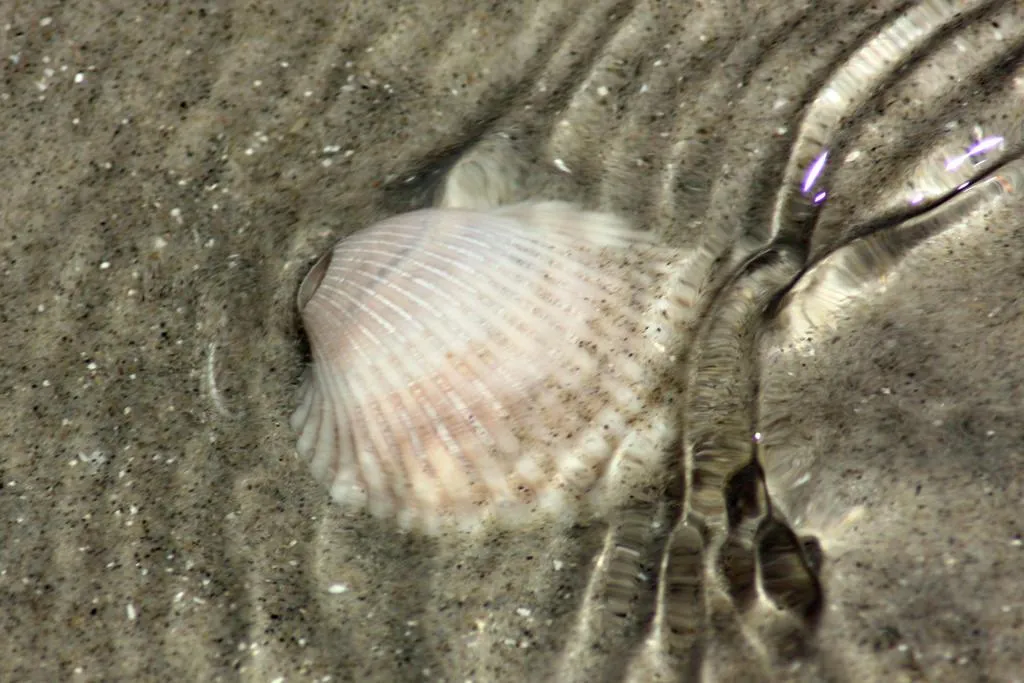Five of the Best Beaches for Beachcombing in the U.S.
On the hunt for seashells and other buried treasure? Here’s where to look
:focal(1357x1402:1358x1403)/https://tf-cmsv2-smithsonianmag-media.s3.amazonaws.com/filer/2e/94/2e94609c-2514-4573-ab86-4f54d005aa8e/dh002785.jpg)
For many people, a day at the beach isn’t complete until they’ve dusted off a sand-covered seashell and added it to their collection. But beachcombers shouldn’t limit their treasure hunting to just conches and cockles.
From sea glass and "sea-beans" to glass floats and driftwood, beaches in the United States are brimming with treasures to take home as souvenirs. But before you pocket anything, one word of warning: Make sure there’s no longer a sea creature living inside its shell. In many states, it’s illegal to remove these critters from the beach and doing so can result in a fine. Check to make sure your beach allows beachcombing, or if it sets limits on how many specimens you can take.
Now, grab a bucket and get ready to beachcomb at five of the best spots in the country:
The Beaches of Fort Myers and Sanibel Island, Florida
/https://tf-cmsv2-smithsonianmag-media.s3.amazonaws.com/filer/96/9e/969ee684-feb2-4003-b3ba-8c6ec071b1fd/42-49493311.jpg)
If there’s one spot in the country that’s known as a paradise for seashell enthusiasts, it’s The Beaches of Fort Myers and Sanibel Island. Thanks to the Gulf of Mexico’s consistent currents, which gently sweep hundreds of thousands of shells from the Caribbean north to Florida each day, its not uncommon to find a variety of intact seashells, including horse conchs, calico scallops and corkscrew-shaped augers.
This part of Florida has become so prized among beachcombers that it’s home to the country’s only museum dedicated to shells and mollusks, the Bailey-Matthews National Shell Museum. In addition to including some 30 exhibitions on the subject, the museum hosts daily beach walks led by one of its staff marine biologists and a more in-depth monthly guided excursion to nearby Bunche Beach.
Glass Beach, Hawaii
/https://tf-cmsv2-smithsonianmag-media.s3.amazonaws.com/filer/d9/2c/d92c9797-1abb-4820-b994-ec38467a94a6/1451454340_d037b2a182_b.jpg)
The saying “One man’s trash is another man’s treasure” is particularly appropriate when it comes to sea glass. Thanks to the perfect combination of salt water, waves and sand, bottles and other glass products get broken down over time and result in the smooth, colorful fragments.
Glass Beach on the Hawaiian island of Kauai is one of the most concentrated areas for scoring sea glass in the United States thanks to its proximity to Swiss Cheese Shoreline, once a dumping ground for bottles and automotive glass. Today treasure hunters can expect to strike a jackpot of green, blue, brown, and clear pieces of glass in multiple shapes and sizes—no shovel required.
Calvert Cliffs State Park, Maryland
/https://tf-cmsv2-smithsonianmag-media.s3.amazonaws.com/filer/3c/c9/3cc9343c-b615-4bb9-ba9a-1e3af419d4ce/42-27339382.jpg)
Located about an hour’s drive south of Annapolis, Maryland, Calvert Cliffs State Park is a freshwater and tidal marshland that’s a prime spot for fossil hunting. Over the years, more than 600 species of fossils have been discovered on the beaches and surrounding cliffs, including oysters from the Miocene era (approximately 10 to 20 million years old) and Chesapectens, a fossilized genus of scallop that lived between the Miocene and Pleistocene eras. Another common find: shark teeth. The best time to beachcomb is after a storm, since the rain helps wash away sand and makes specimens more readily visible and during low tide, according to the Maryland Geological Survey.
Padre Island National Seashore, Texas

Stretching approximately 70 miles along the Gulf of Mexico, Padre Island National Seashore in Corpus Christi, Texas, is a mecca for shells, driftwood and sea-beans (seeds and fruits carried into the ocean from freshwater sources). Because the gulf is a major thruway for ships, it’s also a prime spot for finding man-made objects that wash ashore, including old boat parts like buoys and fishing nets. But one word of caution—since the National Park Service regulates this barrier island, beachcombers must limit their haul to whatever they can fit inside a five-gallon bucket.
Lincoln City, Oregon
/https://tf-cmsv2-smithsonianmag-media.s3.amazonaws.com/filer/af/70/af708ad2-a70f-4840-bef4-e5287680f0bc/glass-floats-1-credit-jordan-may.jpg)
Every year between October and Memorial Day, approximately 3,000 handmade glass floats created by local glassblowers are strewn along the more than seven-mile stretch of beaches in Lincoln City, Oregon, located two hours southwest of Portland. Called Finders Keepers, the annual event is a nod to the glass floats that fall off of Japanese fishing boats an ocean away and land on the Oregon coast—often considered the ultimate find by beachcombers thanks to their striking shades of green and blue.
Each day of the event, the city hides a new batch of the multi-colored glass floats on its beaches, and whatever people find, they can keep. There’s also an 800 number where beachcombers can register their finds. In turn, they receive a certificate of authenticity and a bio of the local artisan who made it.
Planning Your Next Trip?
Explore great travel deals
Smithsonian magazine participates in affiliate link advertising programs. If you purchase an item through these links, we receive a commission.